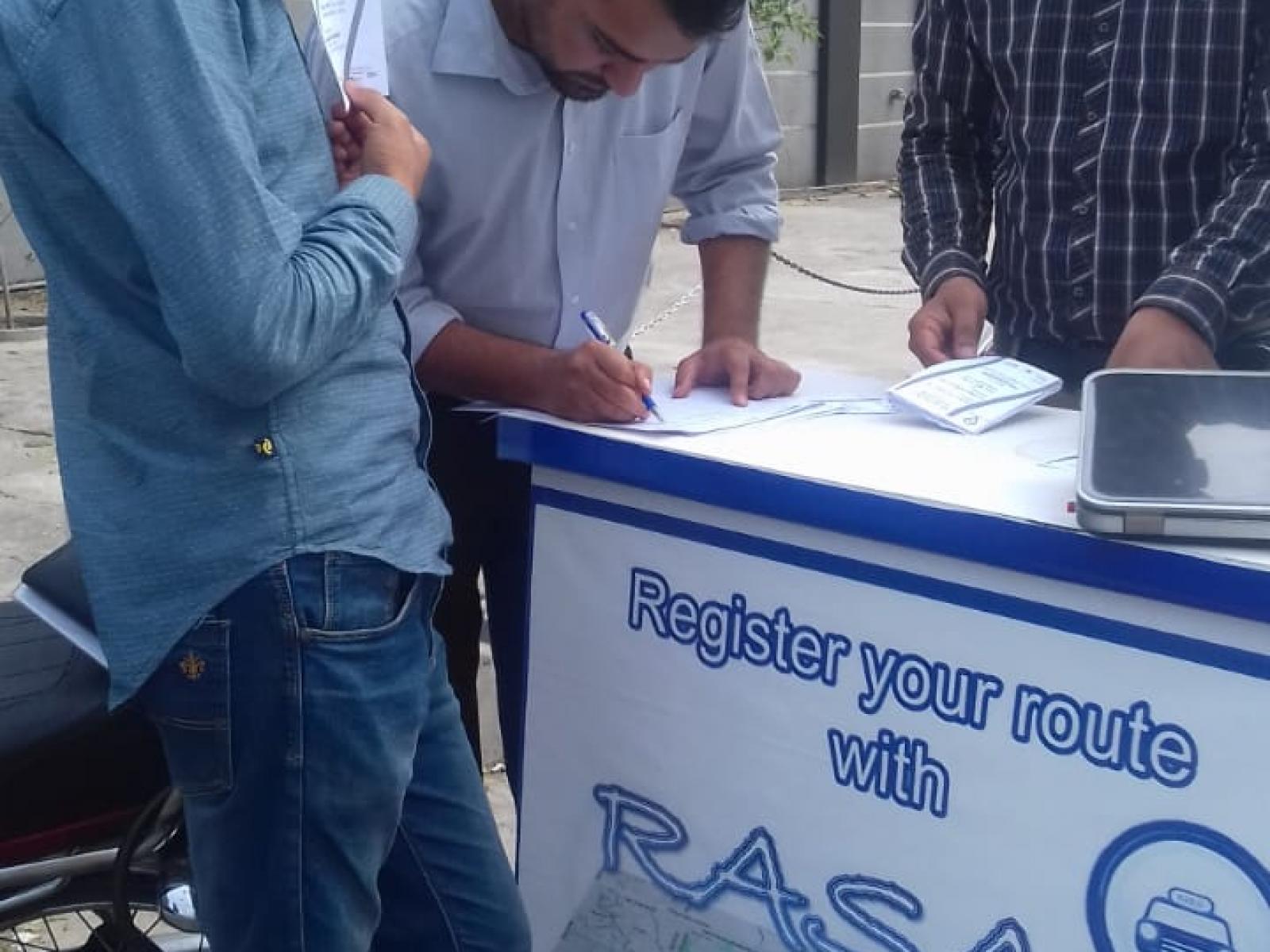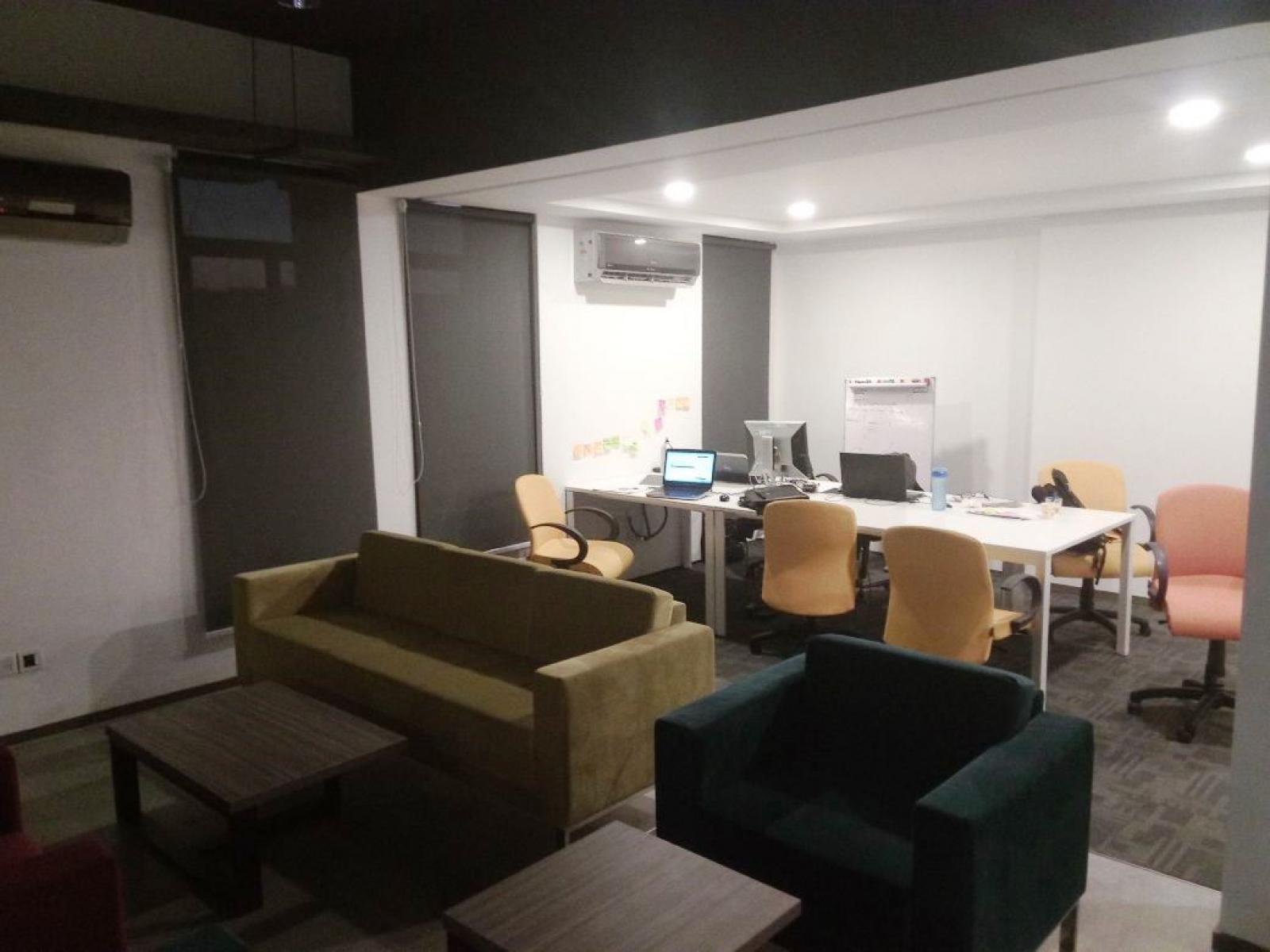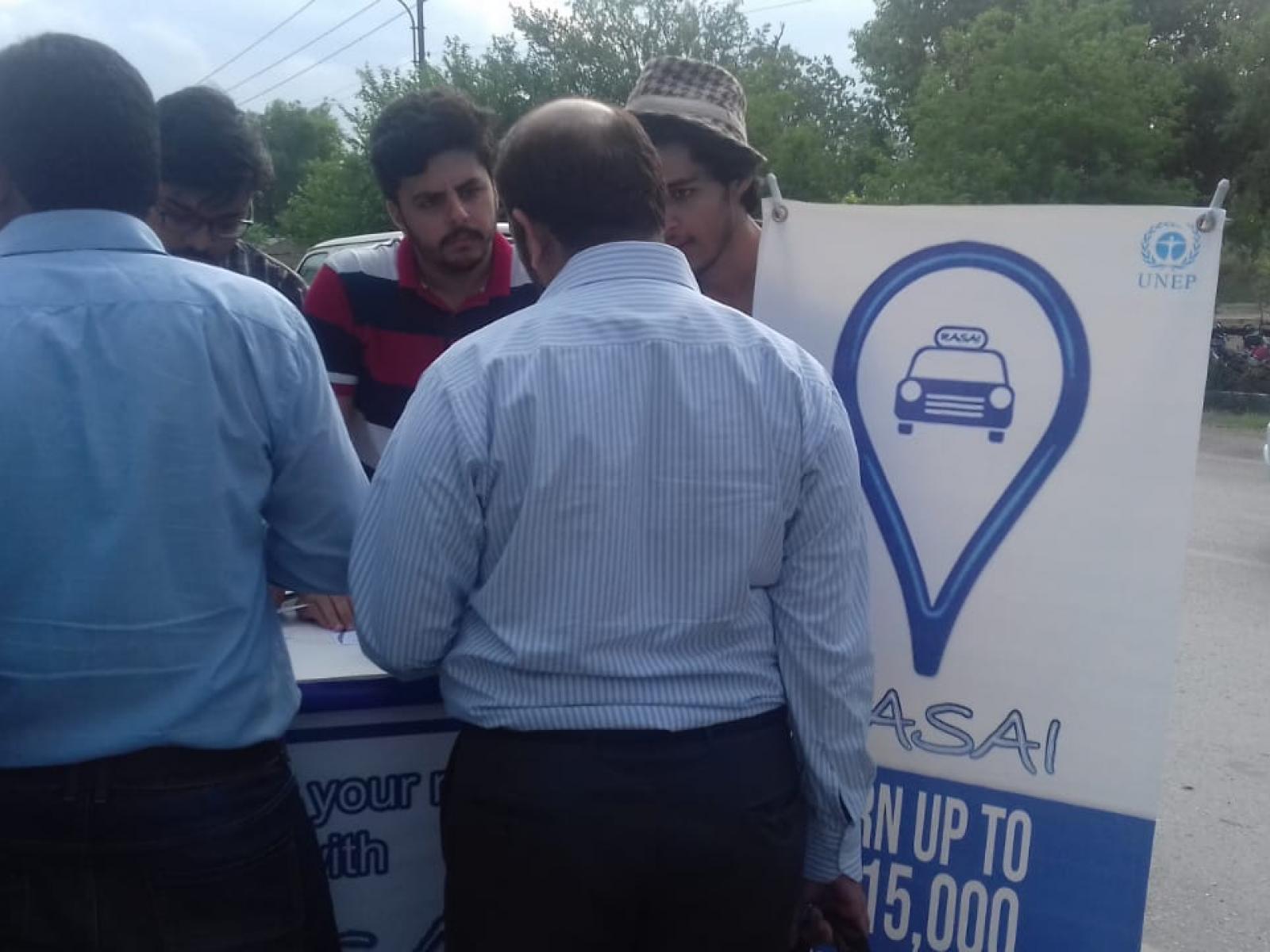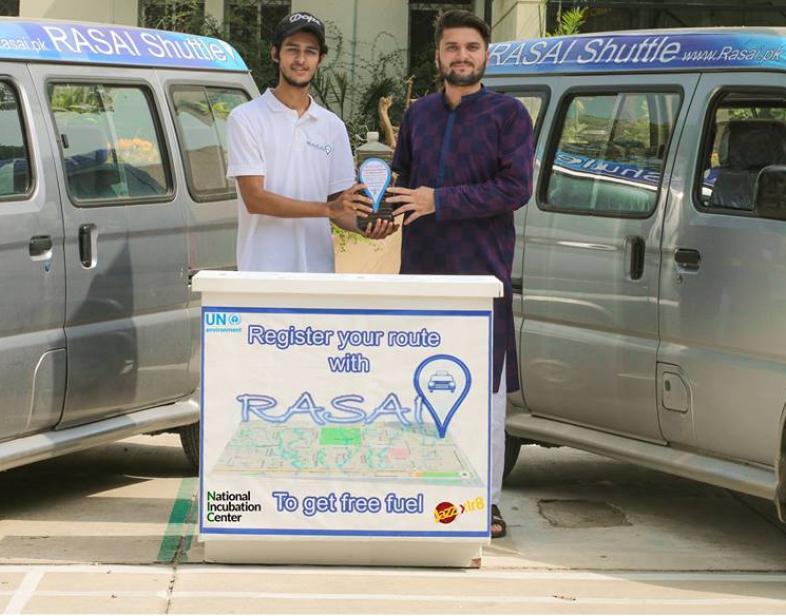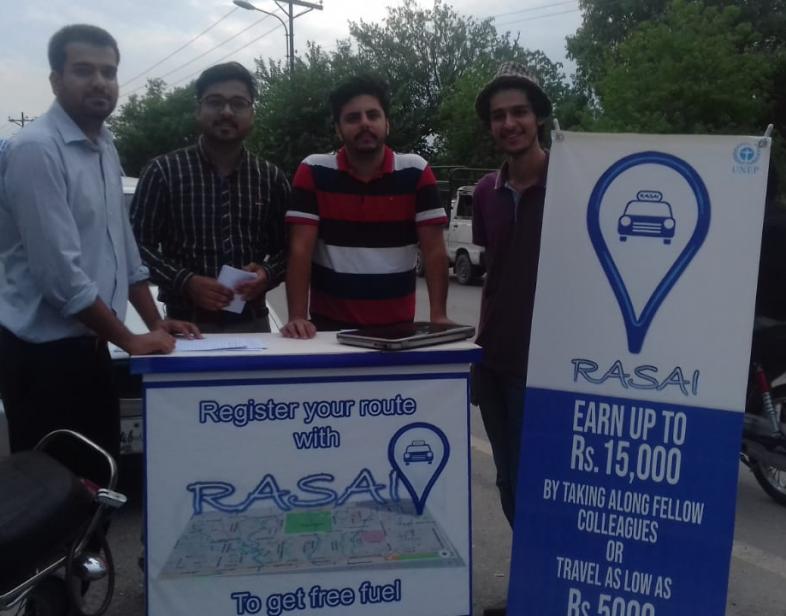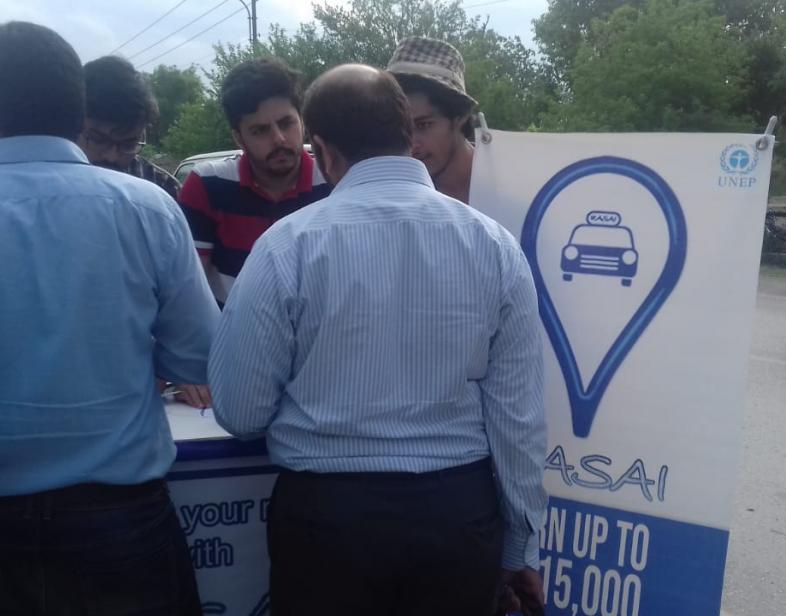An Overview Of Our Solution
More than half of the vehicles on the roads have at least half of their capacity vacant. This means we are using energy & producing pollutants/CO2 moving around empty space/seats. Whereas there is a dire need of affordable transport options in the developing world as vast urban sprawls are transit desserts necessitating use of private vehicles this causes more damage to the environment & fuel wastage as congestion in city center is worsened.
RASAI enables efficient & convenient utilization of this extra space by allowing commuters to register their route & uses AI powered Route Optimization to bring out a democratized version of Public Transport. This "public Transport 2.0" is more comfortable, quicker & in most cases cheaper than any other option offering 800% greater accessibility.
RASAI is recognized by UNEP as a winner of low carbon lifestyle challenge.
- Population Impacted: 1500
- Continent: Asia
Context Analysis
It is very rare that a small behavioral change such as letting fellow citizens share a ride with you can have huge environmental benefits. This especially in the developing world was the problem as at first finding a convenient match was difficult, secondly managing timing fluctuations & payment collection was a huge hassle that deterred people from such lucrative additional income.
We solved this by not bounding them & allowing to share capacity as convenient, the solution that satisfied both the drivers & passengers allows for "node Switching" that exponentially increases the number of viable shares.
We tested out the model with fixed time commuters and had a lot of success, of the initial 85 cars that registered we were able to save 33,023Kgs of CO2.
The Lucrative aspect of the proposition has made it easy for this behavioral change to scale able, some commuters are able to earn 50% of their monthly income by just sharing commute with Rasai.
Describe the technical solution you wanted the target audience to adopt
Enabling people to effectively utilize the vacant capacity of their vehicle not only made economic and environmental sense but is an epitome of the sharing economy. The solution uses advanced logistical optimization, now possible with advances such as AI & cheap computation power.
RASAI through it's app allows people to register their daily commute routes for a monthly payout, this route is fed into our Dynamic Route Optimization System from which passengers are paired with suitable matches, allowing people to switch vehicles as is done in public transport was instrumental to the success of our model as the number of combinations exponentially increased whilst the price decreased due to better utilization.
On the front end it is very simple for users to use as the mostly pick and drop passengers along their route and the passenger is completely guided of the location and route with switch over and time as well.
Type of intervention
Describe your behavioral intervention
The behavior of not sharing especially in the developing world is something that needs crucial attention as the limited resources combined with poverty has extremely detrimental effects for the economy & environment both,But in order to cultivate this behavior something as noble as saving earth often doesn't work it needs to be coupled with a lucrative proposition to start making the behavior a norm though the motivation maybe monetary instead of environmental concern, adoption of the behavior opens up a new way of thinking.
One of the most crucial elements to making the transition smooth is making the alternative as easy as possible to adopt & this has been done through utilizing the latest advance in technology such Artificial Intelligence, Deep Learning and Big Data Analytics.
We propose to the commuter with a car to how would he like to get paid for daily commute, register your route at RASAI(www.rasai.pk/signup) and we will find you someone who can share a part of their journey with you.
The biggest catch is when we tell them that there is no compulsion you can just let us know in advance when you are unable to fulfill your commitment and a slight deduction from the monthly payout will be adjusted, this has been really effective to convincing users on supply side, on the demand side the simple proposition of most cost effective way of travelling is all that is needed.
Retamal, M., Dominish, E., 2017, The Sharing Economy in Developing countries
As needed, please explain the type of intervention in more detail
The emotional appeal of giving a ride to someone in need is one of most common reason cited by users other than the monetary advantage.
The chance to network, socialize and make friends also has major role in user acceptance.
Allowing users to enter into a non binding, flexible contract ensures that there apprehensions are addressed before hand.
Describe your implementation
As a startup we have to start from scratch from designing and developing the solution to experimenting with the business models, marketing, convincing customers in a risk averse environment and then managing and tweaking operation to customer satisfaction.
It has been an uphill challenge all the way for more than a year since we conceived and started working on the technical side first.
Activities such as stakeholder interviews, focus group, test runs and all major/minor activities required prior to development were carried out, with promising results later the business model was changed in order to find the path of least resistance for the user to adopt our solution as easily as possible and feedback was integrated into the following iterations.
Enabling conditions such as expensive fuel, lack of public transit, very high ratio of income to fare(upto 45% for women) all were conducive to adoption of the value proposition that we had to offer.
Key success factor was the introduction of the node switching mechanism, no such example was previously available our partnership with research faculty in universities such as Texas A&M was instrumental for AI component.
Convincing people to change their behavior and preference in a risk averse, change averse environment was the harder than we could ever anticipate.
External connections
United Nations Environment program for providing mentorship and Funds ($10,000)
National Incubation Center for providing guidance and work space.
Jazz Xlr8 for providing customer insight and marketing support.
NUST for providing MBA teams for operations.
Texas A&M faculty for help in research on AI.
Offices, Universities were targeted for the promotion of the service, Government agencies such as national highway authority, Radio Networks and Traffic police have also been involved currently at planning stage .
Who adopted the desired behaviors and to what degree?
More than 500 customers are being served on monthly basis with approximately 180 vehicles growing on daily basis.
The most pertinent customer segment that easily relates to the value proposition are the long distance commuters from the suburbs, this demographic is growing at an alarming rate given the rapid urbanization in developing countries.
Users are usually between the ages of 18-28 and are tech savvy, mostly those holding jobs in CBD with fixed timings.
How did you impact natural resource use and greenhouse gas emissions?
The Project cuts down on GHG by the Reduce method in both consumption and production. 160,000 passenger-kms that have been shared would have produced 48,382Kgs (37,280Kg CO2 from operations and 11,102Kg CO2 for production), whereas by reducing usage by a factor of 3.15(4 passengers @ 35% ,3 passengers @ 45% ,2 passengers @20%) to 50,794 km means a reduction of 33,023Kgs of CO2, (by emitting only 11,834Kg CO2 from emissions and 3,524Kg for production).
These savings have been the result of just the initial experimentation with room for improvement as the numbers of users grow the amount of GHG and fuel reduction shall also grow as more data points enable better efficiency.
If 8,000 monthly users that share commute through RASAI, an efficiency factor 3.5 can be achieved, resulting in saving of: 8,000 users x 25km x 2time/day x 22days= 8,800,000kms/month equivalent to 2,661,120Kg of CO2 per annum by reducing this amount by a factor of 3.5 we can save over 1,900,800Kg of CO2.
What were some of the resulting co-benefits?
Reduction in driving fatigue and congestion can be attributed as co benefits, with the certain reduction in pollution and fossil fuel demand, additionally, we foresee an impact on private vehicle demand as our model for the first time now offers an accessible and convenient way of travelling that is cheaper than the personal car and fulfills the lack of a public transit system in much more efficient Dynamic Real time Network.
Sustainability
We are cash flow positive but do require grant to expedite growth as marketing is very expensive and a large well funded campaign is essential to not risk customer image of the solution.
Return on investment
We were awarded with a $10,000 grant by the UNEP and I had taken a loan of $ 20,000 initially to get started.
How could we successfully replicate this solution elsewhere?
The advantage of an online model that it is highly scale able, We have finalized strategies of expanding nationwide and have also done a preliminary study of international markets such as Bangkok where the utility and effectiveness is even much higher.
